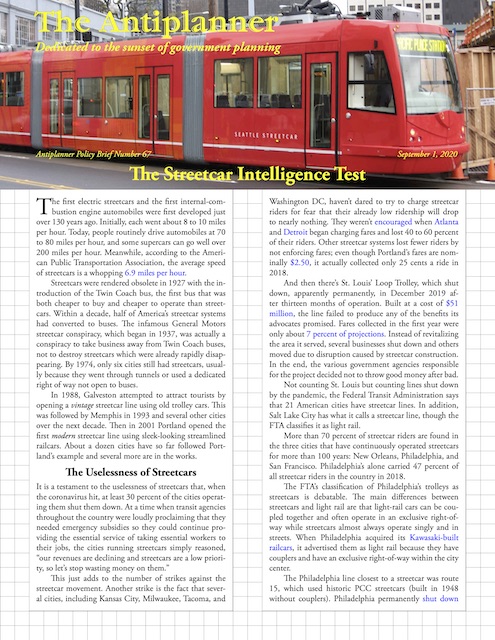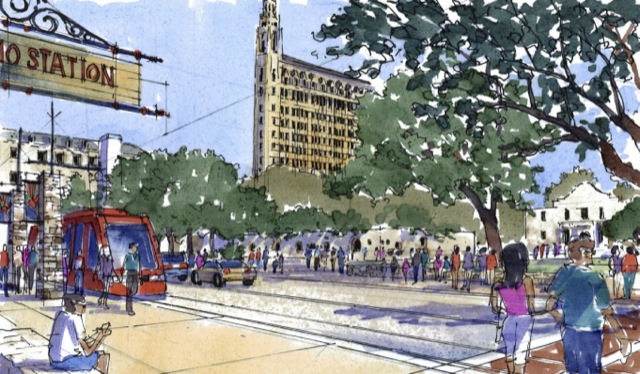The first electric streetcars and the first internal-combustion engine automobiles were first developed just over 130 years ago. Initially, each went about 8 to 10 miles per hour. Today, people routinely drive automobiles at 70 to 80 miles per hour, and some supercars can go well over 200 miles per hour. Meanwhile, according to the American Public Transportation Association, the average speed of streetcars is a whopping 6.9 miles per hour.
 Click image to download a five-page PDF of this policy brief.
Click image to download a five-page PDF of this policy brief.
Streetcars were rendered obsolete in 1927 with the introduction of the Twin Coach bus, the first bus that was both cheaper to buy and cheaper to operate than streetcars. Within a decade, half of America’s streetcar systems had converted to buses. The infamous General Motors streetcar conspiracy, which began in 1937, was actually a conspiracy to take business away from Twin Coach buses, not to destroy streetcars which were already rapidly disappearing. By 1974, only six cities still had streetcars, usually because they went through tunnels or used a dedicated right of way not open to buses. Continue reading








